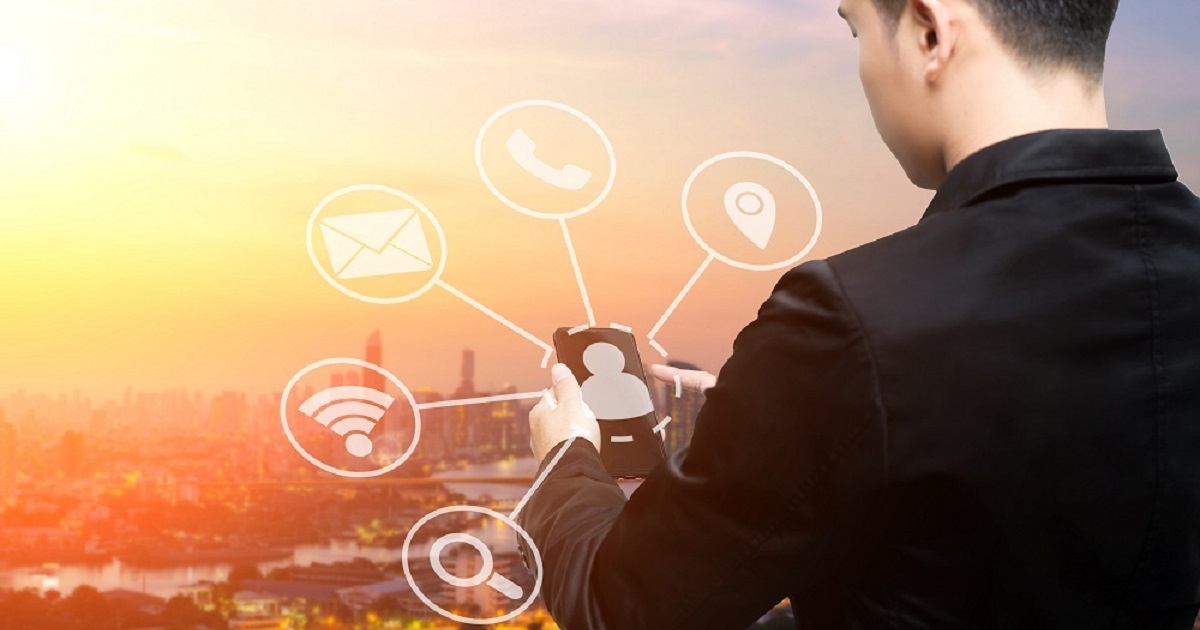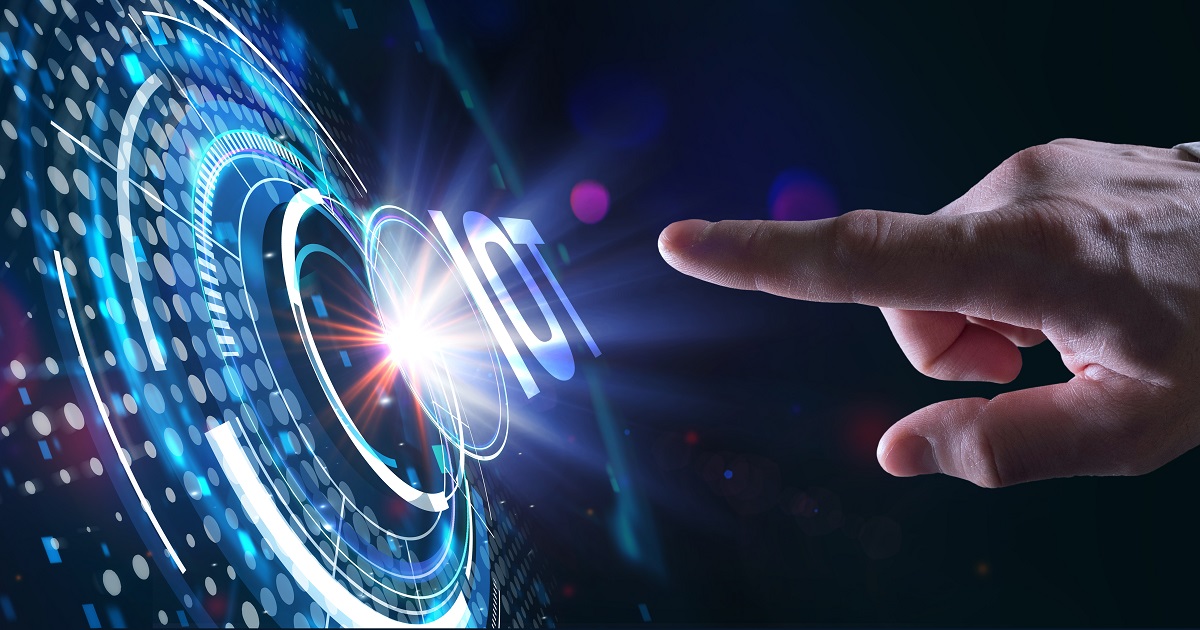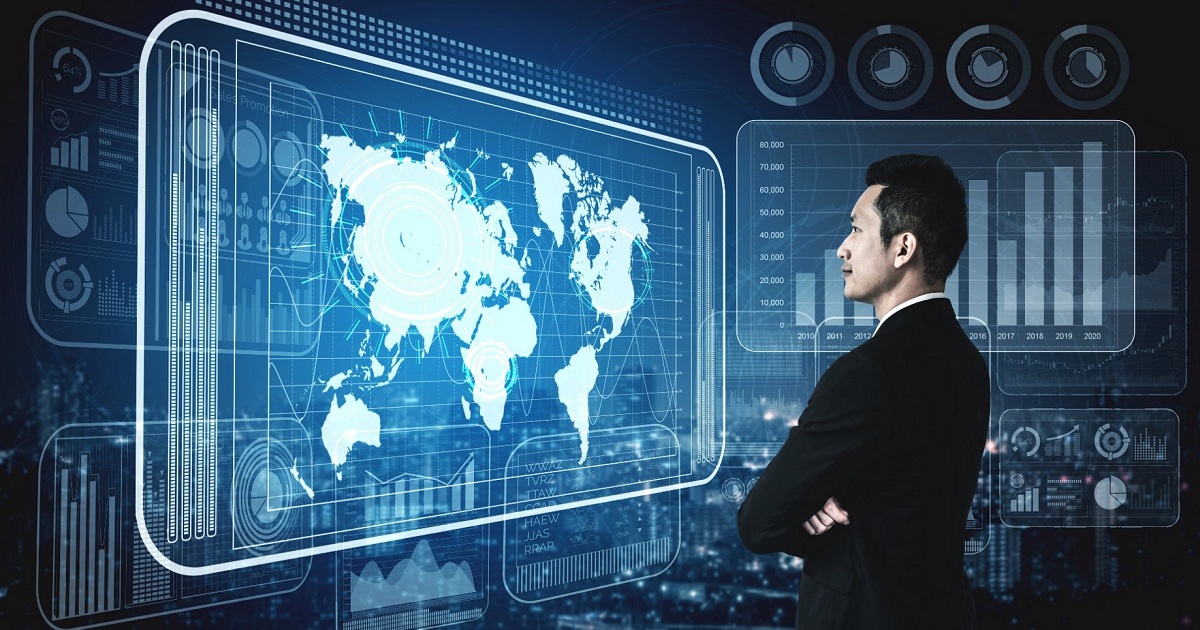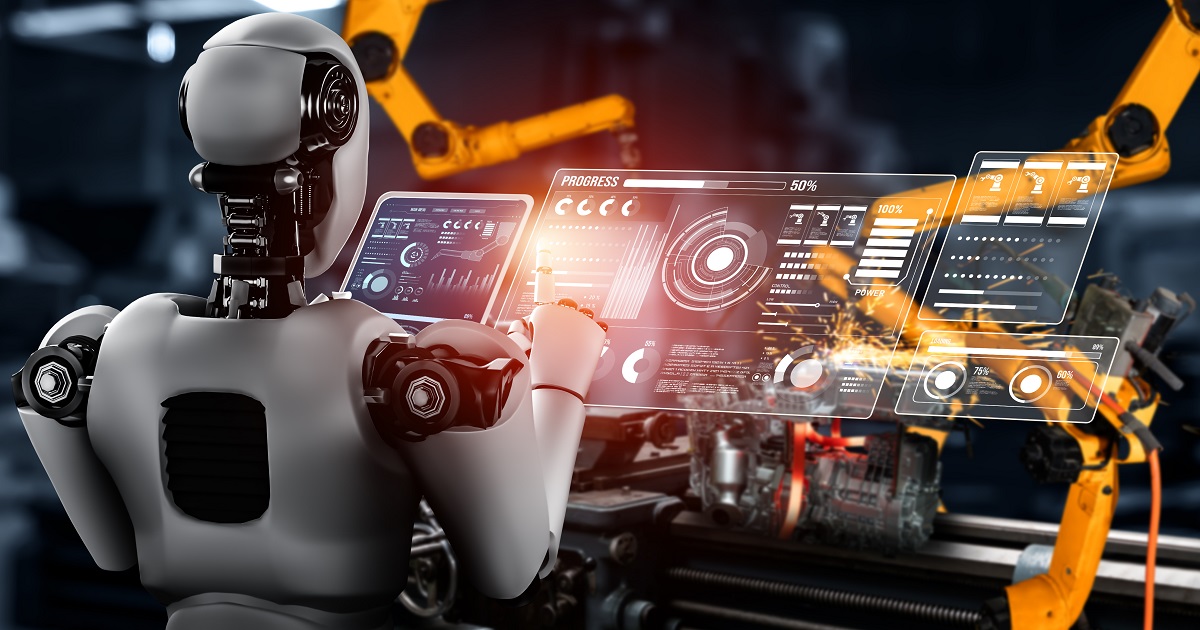
Enterprise Iot
Article | May 11, 2023
The nature of digital and physical security is evolving as a result of cloud-based IoT software, which enables both security components to be combined and used to exploit data better.
Commercial use of cloud-based IoT software is possible, and cloud-based solutions have some advantages in the area of security. IoT technology, which is essential to this development, is driving worldwide development in many areas and revolutionizing daily operations for many businesses.
Data is essential to success in almost every sector, and security is no exception. To better understand what's going on in your business, you can combine cloud-based solutions that contain all the information on a single interface. For instance, integrating security camera feeds with cloud-based access control systems enables real-time visual identification verification.
The Impact of Combining Physical and Cyber Security
Combining digital and physical security, often known as security convergence, helps optimize IoT and cloud-based security systems. A cloud-based physical security system needs cybersecurity software to guard against internet flaws and intrusions. Similarly, physical security measures prevent sensitive data from getting into the wrong hands. Teams for physical and cyber security might combine to provide a more comprehensive action plan. The more seamlessly all physical and digital security components are linked, the more secure and future-proof a commercial system will be.
When organizations use IoT technology, cybersecurity is a significant concern. However, by combining physical and digital security, organizations can make sure their cloud-based systems are well protected from vulnerabilities. In addition, the security and IT teams will also be better able to manage the evolving security landscape when the organization combines physical and digital security ideas.
Read More

IoT Security
Article | July 5, 2023
Explore the IoT tools for security and maintenance. These IoT monitoring tools addresses cyber security and privacy issues, catering to a various users including industrialists & individuals.
With the proliferation of interconnected devices in the Internet of Things ecosystem, ensuring robust security measures has become crucial to protect against cyber threats. The complexity and diversity of IoT systems pose unique challenges, making thorough security testing an essential practice. To address these challenges, various IoT development tools have emerged that enable organizations to assess and mitigate vulnerabilities in their IoT deployments. In this article, explore the top ten tools to secure IoT and IoT testing, equipping professionals and organizations with the means to identify and address potential security weaknesses, thus bolstering the overall security posture of their IoT infrastructure.
1. AWS IoT Device Defender
AWS IoT Device Defender is one of the security IoT management tools, designed to protect and manage IoT devices and fleets. Its auditing capabilities and continuous monitoring enable users to assess their IoT resources' security posture, identify vulnerabilities, and address potential gaps. By leveraging machine learning models or defining custom device behaviors, it can monitor and detect malicious activities, such as traffic from suspicious IP addresses or unusual connection attempts. The tool provides security alerts for failed audits or behavior anomalies, allowing users to mitigate potential risks quickly. Built-in actions facilitate security issue resolution, including device certificate updates, quarantine, and policy replacements. AWS IoT Device Defender offers automation for security assessments, identification of attack vectors, analysis of historical device behavior, and alarm notifications through various AWS interfaces.
2. Dynamic Application Security Testing
Appknox offers two robust mobile application security solutions: Automated Dynamic Application Security Testing (DAST) and Penetration Testing (PT). With Automated DAST, users can assess the security of their mobile apps in real time while running in their operational environment. The solution provides access to real devices, allowing users to replicate real-life interactions and identify security vulnerabilities. On the other hand, Appknox's Penetration Testing solution delivers reliable and thorough security assessments by expert security researchers. Users can request a manual pentest effortlessly, and the skilled team analyzes apps to identify and eliminate potential threats. The process includes identifying the tech stack, analyzing the threat landscape, setting up breakpoints, testing responses, detecting bugs, and performing advanced threat exploits.
3. Enterprise IoT Security
Enterprise IoT Security is a comprehensive Zero Trust solution designed to address IoT devices' security challenges in modern enterprises. It helps eliminate implicit trust and enforces zero-trust principles through least privilege access, continuous trust verification, and continuous security inspection. With this solution, organizations can quickly discover and assess every IoT device, easily segment and enforce the least privileged access, and protect against known and unknown threats. By simplifying operations, Enterprise IoT Security enables faster deployment, with a 15-time faster deployment than other solutions. The solution offers better and faster protection for IoT devices, delivering 70 times more security efficiency and 20 times speedier policy creation.
4. Azure Sphere
Azure Sphere is a secure IoT platform offered by Microsoft that allows businesses to create, connect, and maintain intelligent IoT devices. It provides end-to-end security, from the silicon level to the operating system (OS) to the cloud. With Azure Sphere, organizations can securely connect, manage, and protect existing and new IoT devices. The platform offers over-the-air updates, integration with IoT platform services, and continuous security improvements. It helps businesses deploy real-time security patches, maintain device operations, and accelerate time to market. Azure Sphere incorporates essential security properties and offers comprehensive security and compliance.
5. Microsoft Defender for IoT
Microsoft Defender for IoT is a comprehensive security solution that provides real-time asset discovery, vulnerability management, and threat protection for the Internet of Things and industrial infrastructure, including ICS/OT environments. It offers context-aware visibility into IoT and OT assets, enabling organizations to manage their security posture and reduce attack surfaces based on risk prioritization. With behavioral analytics, it detects and responds to attacks across IT and OT networks. Integrated with SIEM/SOAR and XDR tools, it delivers unified security and leverages threat intelligence for automatic response. Microsoft Defender for IoT is designed to meet the unique security needs of various industries and supports complete endpoint protection when combined with Defender for Endpoint.
6. IoT Security
Forescout offers an IoT security solution that automates security measures and provides visibility for every device connected to the network. Their zero-trust approach ensures complete device visibility, proactive network segmentation, and least-privilege access control for IoT, OT, IoMT, and IT devices. The platform classifies and monitors devices in real time, identifies weak credentials, and enforces strong passwords. It also enables dynamic network segmentation and automates zero trust policy orchestration across multi-vendor environments. Forescout's solution efficiently manages asset inventory and device lifecycle and has been proven to scale for enterprise-level deployments.
7. ThingSpace
The ThingSpace Platform for IoT offers a comprehensive set of iot tools and devices for developing and managing the lifecycle of IoT devices. It enables connectivity management at scale, allowing secure activation on the Verizon network and providing features to troubleshoot, locate, and manage IoT devices. Whether at the prototype stage or ready to scale for enterprise-level deployment, ThingSpace provides the necessary resources for IoT solution development and management. As a Magic Quadrant Leader for IoT Connectivity Services, ThingSpace offers solutions for software management, device readiness, and overall device lifecycle management. Businesses can collaborate with technology leaders through their Executive Briefing Program to achieve their specific goals and gain a competitive edge.
8. Verimatrix
The Verimatrix Secure Delivery Platform offers a unified user experience by combining cybersecurity and anti-piracy services into a comprehensive cloud ecosystem. It provides media companies, content owners, streaming providers, and broadcast operators with a single pane of glass experience for securing content, applications, and devices. Key offerings include Streamkeeper Multi-DRM for cloud-based digital rights management, Verimatrix App Shield for zero code hardening of mobile applications, Verimatrix Video Content Authority System (VCAS) for real-time monitoring, and Streamkeeper Counterspy for cybersecurity and anti-piracy solutions. The platform also facilitates partner integrations, enabling seamless onboarding and revenue preservation.
9. Trustwave
Trustwave's Managed IoT Security provides comprehensive solutions to secure the Internet of Things (IoT) and minimize the risk of compromise. With expertise from Trustwave SpiderLabs, it offers knowledge about network assets, identifies weaknesses in applications, servers, APIs, and cloud clusters, and enables secure IoT deployment with quick validation of fixes. This reduces the risk of compromised devices, which can lead to various threats, including DoS attacks, privacy violations, and data theft. Trustwave's services cater to IoT developers/manufacturers, offering product security reviews, testing, and incident readiness services. For IoT implementers, it provides managed security services and testing to safeguard deployments and associated data.
10. ARMIS Agentless Device Security Platform
The ARMIS Agentless Device Security Platform supports implementing the Critical Security Controls(CIS) framework. Developed by the Center for Internet Security (CIS), these controls are periodically updated by a global community of experts. ARMIS aligns with the CIS Controls and provides a comprehensive set of security controls to address the framework's requirements. The platform caters to enterprises of all sizes and offers different implementation groups based on risk profile and available resources. With ARMIS, organizations can enhance their cybersecurity posture and implement the CIS Controls effectively.
Final Thoughts
Security is a major concern in IoT tools and software due to the proliferation of connected devices, the diverse and complex nature of IoT ecosystems, the need to protect data privacy and confidentiality, the lack of standardization, the long lifecycles of devices, and the distributed and scalable nature of IoT deployments. Addressing these concerns is crucial to prevent unauthorized access, data breaches, and ensure the integrity and privacy of IoT data.
The IoT tools and technologies discussed in this article represent some of the top options for conducting comprehensive IoT security testing. By leveraging these tools, professionals and organizations can proactively identify and address vulnerabilities in their IoT systems, ensuring their data and devices' confidentiality, integrity, and availability. By incorporating these tools into their security practices, organizations can bolster their IoT security strategy and enhance their ability to protect against emerging threats in the dynamic IoT landscape.
Read More

IoT Security
Article | June 28, 2023
The COVID-19 pandemic turned the tides towards remote work and virtual connectivity. And even though growth seemed to have slowed down in 2020, experts see double-digit growth in the next few years. The tides may be turning but virtual connectivity and the tools required for remote growth are not slowing down in demand. As the tech world adapts to new shifts, IoT is among one of the most anticipated technologies to prosper in 2021.
Digital transformation has rapidly accelerated in the past year and if the experts are to be believed, 2021 shows promise for an even better year for technological advancement. According to IDC’s 2020-2024 forecast, spending will reach an annual growth rate of 11.3 percent. And with this, the number of connected devices is likely to grow up. Take a look at what will be the focus of IoT industry trends in 2021.
Privacy & Security
As smart homes are becoming the norm and you cannot throw a stone without hitting a smart device, one thing is clear—IoT devices are everywhere. People almost always forget smartphones when talking about IoT devices, but the fact is that smartphones are very much a part of the IoT ecosystem. And with the infusion of IoT in our everyday lives, questions about privacy and security are cropping up.
Just recently, as WhatsApp announced its new privacy policy, millions of users planned to migrate to other alternatives. This led to WhatsApp pushing back its privacy update and tech businesses taking note of changing winds.
In 2021, privacy and security will be at the forefront of IoT industry trends, as devices infuse further into the everyday lives of people. According to recent research, 90 percent of consumers lack confidence in IoT device security. And the onus of bolstering consumer confidence will be up to IoT businesses.
Workforce Management
According to Gartner’s “Top Strategic Technology Trends For 2021” report, IoT will be a large part of the office experience in 2021. As businesses are trying to avoid the losses that occurred in early 2020, workplaces are being geared up with RFID tags, sensors, and monitors to ensure social distancing measures, whether employees are wearing masks and overall health monitoring.
Additionally, many organizations have decided to move permanently to a remote mode and will rely more on IoT devices for connectivity. So we can expect better automated scheduling and calendar tools, more interactive video conferencing, and virtual meeting technology. In the case of fieldwork, IoT will offer an added factor of monitoring behavior.
Greener IoT
Experts predict that energy will be a crucial factor in the IoT industry trends in 2021. With smart grids, metering, and restoration resilience being powered by IoT, 2021 will move towards optimized energy consumption and devices that are designed to encourage energy-friendly practices.
What’s more? Smart engines and automobiles can be optimized to reduce their carbon footprint and become energy-friendly. As evidenced by the Paris summit and the wildfires in 2020, the world is becoming ecologically conscious. IoT devices in 2021 will focus heavily on reduced emissions, lowering air and ocean pollution, and minimizing power expenditure.
Location Data
As COVID-19 limited human interaction, location-based services soared during the pandemic. Businesses started leveraging location data to offer curbside pickup, virtual queues, and check-ins for reservations to enhance the customer experience during the pandemic.
According to experts, the use of location data will continue to be crucial for customer service and convenience in 2021. As people prefer being safe even as the vaccines are being delivered, location data will allow businesses to cater to their customers without compromising on customer or employee safety.
Digital twins
IoT is being helmed as the perfect technology partner for creating digital twins in many industries. As IoT collects a large amount of data through physical devices, this data can be reinterpreted to create the perfect digital twins. Also, IoT can offer visibility into the full product life cycle and unfold deeper operational intelligence. Companies like Siemens are already leveraging technologies like AIoT to design and create digital twins for product design and production. Coupled with AI, IoT will be used more commonly for creating digital twins in 2021.
A technology as dynamic as IoT can be leveraged for almost any application. Therefore, it may surprise us all in the way it progresses in 2021. However, experts believe that the above 5 IoT industry trends will rule 2021 for sure.
Frequently Asked Questions
What are the latest IoT industry trends?
The use of IoT in Healthcare, Artificial Intelligence, workforce management, and ecological conservation can be deemed as some of the latest trends in IoT.
What is the future scope of IoT?
As experts believe there will be over 85 billion connected devices by the end of 2021, and the numbers are promising for upcoming years, we can safely say that the future of IoT is indeed bright.
What industries are most likely to use the Internet of things technology?
IoT is a dynamic technology with applications in almost every industry. However, industries like healthcare, construction, manufacturing, tech, and resource management are most like to use IoT right now.
{
"@context": "https://schema.org",
"@type": "FAQPage",
"mainEntity": [{
"@type": "Question",
"name": "What are the latest IoT industry trends?",
"acceptedAnswer": {
"@type": "Answer",
"text": "The use of IoT in Healthcare, Artificial Intelligence, workforce management, and ecological conservation can be deemed as some of the latest trends in IoT."
}
},{
"@type": "Question",
"name": "What is the future scope of IoT?",
"acceptedAnswer": {
"@type": "Answer",
"text": "As experts believe there will be over 85 billion connected devices by the end of 2021, and the numbers are promising for upcoming years, we can safely say that the future of IoT is indeed bright."
}
},{
"@type": "Question",
"name": "What industries are most likely to use the Internet of things technology?",
"acceptedAnswer": {
"@type": "Answer",
"text": "IoT is a dynamic technology with applications in almost every industry. However, industries like healthcare, construction, manufacturing, tech, and resource management are most like to use IoT right now."
}
}]
}
Read More

Software and Tools
Article | May 26, 2022
Introduction
We live in a world where technology is becoming more and more intertwined with our daily lives. It’s no longer just our laptops, smartphones, and tablets connected to the internet – now, our homes, cars, and even our clothes can be too. This interconnectedness is made possible by the internet of things (IoT), a network of physical objects equipped with sensors and software that allow them to collect and exchange data.
IoT devices have the potential to transform the way we live and work. They can make our lives more convenient and help us be more efficient. IoT devices can also help us to save money and to improve the quality of our lives.
IoT devices are devices that are connected to the internet and can collect, send, and receive data. They can be anything from fitness trackers to industrial machines. IoT devices are used across a variety of industries, and they are becoming more and more commonplace. At [x]cube LABS, we have helped global enterprises deliver great value to their consumers with IoT devices, and in this blog post, we will talk about how IoT devices are used in different industries. Additionally, we will give some examples of IoT devices that are being used in each industry.
Healthcare
IoT devices are being used in healthcare to provide better patient care and to improve the efficiency of healthcare organizations. IoT devices can be used to monitor patients’ vital signs, track their medication adherence, and collect data about their health. IoT devices can also be used to provide remote patient monitoring, track medical equipment, and support clinical research.
There are many different types of IoT devices that are being used in healthcare. Some of the most common types of IoT devices that are being used in healthcare include wearable devices, such as fitness trackers and smartwatches; medical devices, such as pacemakers and insulin pumps; and hospital equipment, such as IV pumps and ventilators. All these devices collect data that can be used to improve patient care and make healthcare organizations more efficient.
Manufacturing
IoT devices are being used in manufacturing to improve the efficiency of production lines and to reduce the amount of waste. IoT devices can be used to track the production of products, monitor the condition of machinery, and control the flow of materials. IoT devices can also be used to provide data about the quality of products and to improve the safety of workers.
One of the most common types of IoT devices that are being used in manufacturing is the industrial sensor. Industrial sensors are used to monitor the production of products, the condition of machinery, and the flow of materials. Industrial sensors can also be used to provide data about the quality of products and to improve the safety of workers. The availability of data from industrial sensors is helping manufacturers to improve the efficiency of production lines and to reduce the amount of waste.
Retail
IoT devices are being used in retail to improve the customer experience and increase sales. IoT devices can be used to track inventory, provide customer loyalty programs, and collect data about customer behavior. IoT devices can also be used to provide personalized recommendations, targeted promotions, and real-time customer support.
IoT devices are changing the retail sector in a number of ways. One of the most important ways that IoT devices are changing retail is by providing retailers with real-time data about their customers’ behavior. This data allows retailers to provide a more personalized shopping experience. IoT devices are also being used to improve the efficiency of retail operations, such as inventory management and customer loyalty programs.
Transportation
IoT devices are being used in transportation to improve the safety of drivers and reduce traffic congestion. IoT devices can be used to monitor the condition of vehicles, track their location, and control their speed. IoT devices can also be used to provide data about traffic conditions and to improve the efficiency of transportation systems.
One of the most common types of IoT devices that are being used in transportation is the GPS tracker. GPS trackers are used to monitor the location of vehicles, and they can be used to track the speed and movement of vehicles. GPS trackers can also be used to provide data about traffic conditions and to improve the efficiency of transportation systems.
Agriculture
Agriculture has become increasingly reliant on IoT devices in recent years. IoT devices are being used in agriculture to improve the yield of crops and to reduce the amount of water and fertilizer that is used. IoT devices can be utilized to monitor the condition of crops, track the location of farm animals, and control the flow of irrigation water.
These innovations are helping farmers to increase the yield of their crops and to reduce the amount of water and fertilizer that is used. The data collected by IoT devices is also helping farmers to make more informed decisions about planting, irrigation, and crop maintenance.
Smart Homes
Smart homes are becoming increasingly popular, and IoT devices are the backbone of these systems. IoT devices are being used in homes to improve the security of the home, reduce energy consumption, and improve the quality of life. They can be used to monitor the condition of the home, track the location of family members, and control the operation of home appliances. What’s more, IoT devices can also provide data about the quality of the air, which can be used to improve the efficiency of home security systems. In the future, IoT devices will become an integral part of the smart home, and they will be used to control a wide variety of home appliances and systems.
Aviation
The aviation industry is making use of IoT devices to a great extent. The aviation sector is one of the most heavily regulated industries in the world, and IoT devices are being used to improve the safety of passengers and crew members.
IoT is changing the aviation industry by providing data that can be used to improve the safety of pilots and passengers. IoT devices can be used to monitor the condition of aircraft, track their location, and control their speed. IoT devices can also be used to provide data about weather conditions and to improve the efficiency of aviation operations, which can ultimately lead to lower airfare prices.
Energy
The energy sector is also utilizing IoT for a variety of applications. One way that IoT is changing the energy sector is by providing data that can be used to improve the efficiency of energy production and consumption.
They are being used to improve the efficiency of power generation and distribution. IoT devices can be used to monitor the condition of power plants, track the location of power lines, and control the flow of electricity. By using IoT devices to monitor and optimize the power grid, energy companies can reduce the amount of power that is wasted and ultimately lower energy bills for consumers.
Conclusion
IoT devices are changing the world in a number of ways. They are providing data that can be used to improve the efficiency of operations in a variety of industries, from retail to transportation to agriculture. It is likely that IoT devices will become an increasingly important part of our lives in the future due to the efficiency and data that they can provide.
Read More